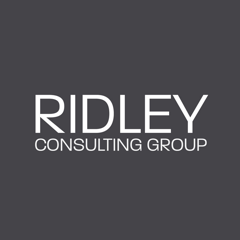How to Measure Success with Building a Diverse and Inclusive Workforce
Our clients are committed to diversifying their workforce to realize the benefits of a diverse and inclusive workplace culture, including revenue gains due to more innovation and improved decision-making. A common question they ask is what better should look like and how to measure progress. Hereís our adviceÖ
innovation and improved decision-making. A common question they ask is what better should look like and how to measure progress. Hereís our adviceÖ
First, understand that the demographic make-up of your workforce is a lagging outcome. That means it is the result of having effective strategies to attract, develop, engage and retain talent from broad and diverse candidate pools. You must also take intentional actions to consider a diverse slate of candidates for open positions. These actions are most important in driving the ultimate outcome of a workforce that reflects the diversity you aspire to have.
Second, be strategic around which dimensions of diversity will benefit your organization by contributing missing or varied points of view, skills and experiences. Be sure to consider hidden dimensions of diversity (e.g. educational background, industry experience, leadership styles, etc.) as well as visible dimensions of diversity (e.g. ethnicity, gender, age, ability, etc.) that make every person unique.
Third, with the desired dimensions of diversity in mind, consider the demographics across these categories to inform what better could look like for your workforce in the long-run to guide near-term actions:
1. The country in which you do business. It makes sense to have your organization-wide workforce reflect the demographics of the country in which you primarily operate if you can hire talent nationwide.
2. Your customer base. This perspective is helpful if you aspire to have your workforce better reflect the customers you currently serve or aspire to serve.
3. Talent with required professional backgrounds, such as college grads with specific degrees or individuals with specific certifications. Appreciating the demographics of your target candidate will inform opportunities to consider a diverse slate of candidates for specific positions in your organization. This perspective may also prompt a discussion to clarify nice to have professional backgrounds versus must-have backgrounds in order to broaden your prospective candidate pool.
Finally (and most importantly), invest in strengthening a culture of belonging to lay the foundation to attract and retain A-talent from broad and diverse candidate pools. Drive accountability for these efforts by setting clear near-term, mid-term and long-term metrics and targets. Here are best practices and examples:
Culture of Belonging Metrics: Best Practices and Examples
†
While itís important to be thoughtful when defining a more diverse workforce in your organization, itís even more important to act. No metrics or targets are perfect. The best ones combine the achievable with the aspirational to motivate action.
Looking for more help to build a diverse and inclusive workforce? Schedule a complimentary consultation with Beth Ridley. In a short and impactful conversation, you will: 1) get feedback on actions taken at your organization to date; 2) understand barriers to change and opportunities to build on; and 3) understand a roadmap for success and immediate next steps.
†
 innovation and improved decision-making. A common question they ask is what better should look like and how to measure progress. Hereís our adviceÖ
innovation and improved decision-making. A common question they ask is what better should look like and how to measure progress. Hereís our adviceÖ